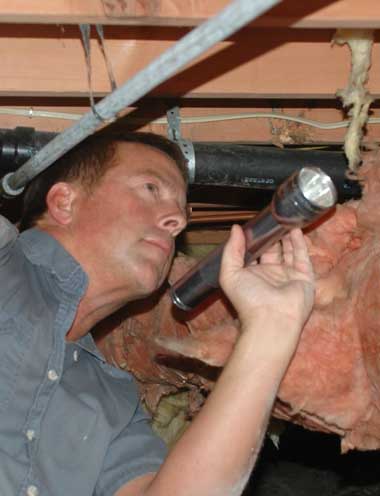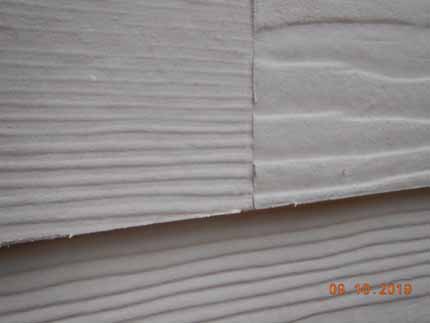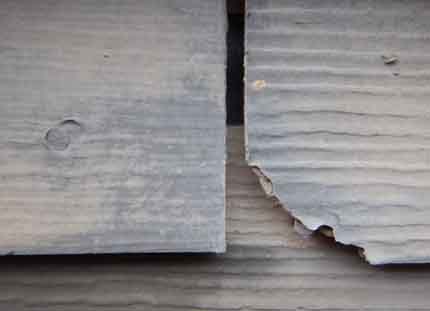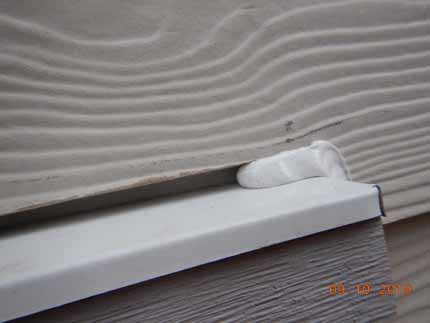| HOME |
| ABOUT US |
| REVIEWS |
| REPORTS |
| IMAGES |
| INFRARED |
| CONTACT US |

There are many types of siding that have been used on single family homes. The information below is not meant to be all-inclusive.
Post 1980's: Current New Home Construction
Most new homes use a concrete type of siding commonly known as Hardi-plank. Few issues have been reported assuming it is properly installed.
 Hardiplank siding |
 Hardiplank installed in 2005 Cracked lower edge and failed caulking |
 Proper head flashing detail |
Pre-late 1980's
Prior to the the late 1980's, cedar or plywood was the most common type of siding used. Cedar can dry out and cup if not properly painted and protected. Plywood sidings can deteriorate with excess moisture directed onto the siding; typically along the lower edge
Post 1980's: LP Composite Siding
In the late 1980's, a new type of siding commonly known as "LP" was introduced and was used extensively in new construction during the late 1980's and early 1990's. The siding tends to absorb moisture, especially when exposed to heavy rain or sun exposure. Most failures will occur at tall walls of a home and chimneys. When covered by large eaves to protect it from the rain and if well painted, especially at the lower edge of the siding, it can serve it purpose for many years. The image shown on this posting is of a chimney at a home in Newcastle, Wa. The home was recently painted. The shiny paint provides a good view of the swollen boards. This siding is likely rotted and could be pulled apart with little effort. Even when in a good condition, having this type of siding can affect the marketability of the home on re-sale
|
Recently painted failed LP siding |
Post 1980's: EIFS Synthetic stucco
Synthetic stucco, AKA EIFS or Dryvit is essentially a finish applied over foam board which is secured over the top of the wood wall sheathing. It was a quicker and less costly method to create a stucco type finish on a home. Most earlier applications were "face sealed" and did not provide a provision for drainage in case moisture entered the wall. The design was reliant on the unrealistic expectation that the caulking would never fail and that the installation would be perfect. In the end, moisture that entered the wall could not escape which results in wood rot. The most prominent areas of concern are chimney, entryways, and areas without the protection of eaves
|
Foam secured directly over OSB wall sheathing |
EIFS siding. Unlike "real stucco", the siding will flex when pressure is applied and expansion joints are typically not installed |
